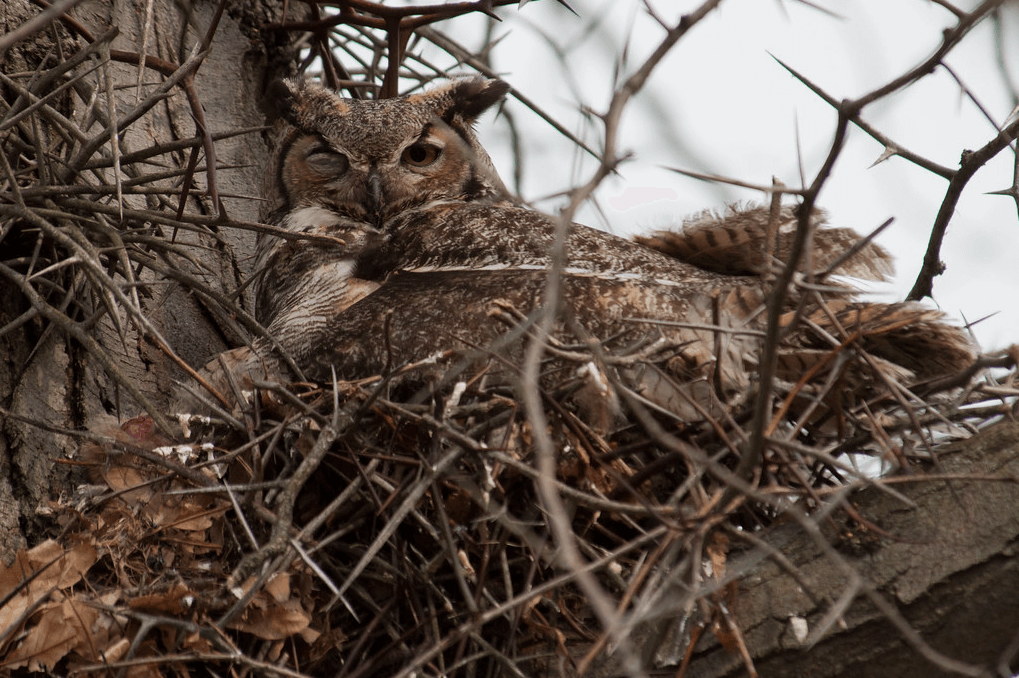By Christine Morris
While hunting last fall, I spent several hours waiting for a deer in the rain…and I began to get bored. So I nibbled the needle of the Douglas-fir tree next to me. The taste was strong but pleasant, citrusy, and emotive. Its flavor was reminiscent of Christmas trees.
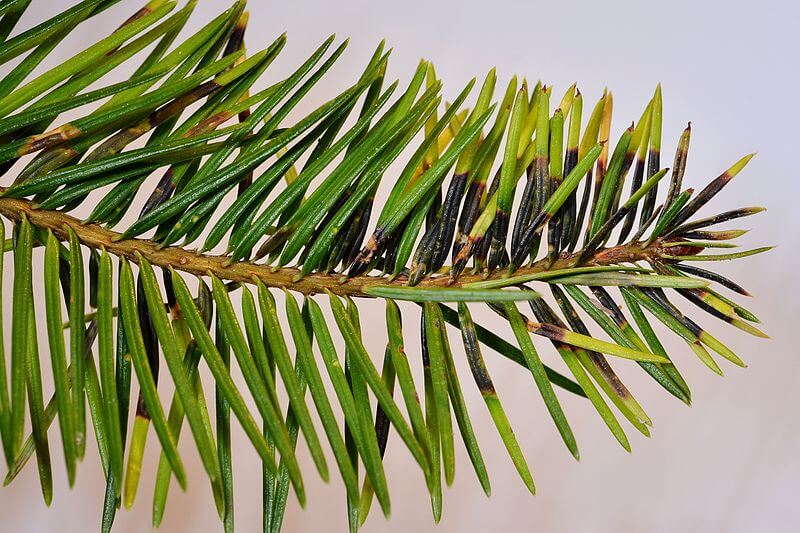
Photo by Gilles San Martin (CC 3.0).
I contemplated the many ways in which we “know” conifers. We can use keys and recognize particular features such as number of needles per fascicle, discern overall shape, and predict species based on habitat. Perhaps we make their branches into wreaths and associate the species with artistic potential. One botanist I know can see a plant from a distance and perceive a taste simultaneously, recognizing the plant or tree in this fashion often without close inspection. Smell and taste can create salient memories, but are not often senses I use to their full potential. I wanted to sample conifer needles and enjoy their differences.
Side note: Montana is home to toxic plants. Do not taste plants unless you know what you are doing. The Pacific yew, for example, is a local conifer, and according to the USFS shows no evidence of toxicity. However, the related English yew is deadly poisonous. Not all conifers are safe to eat. You never know what your neighbor might be growing.
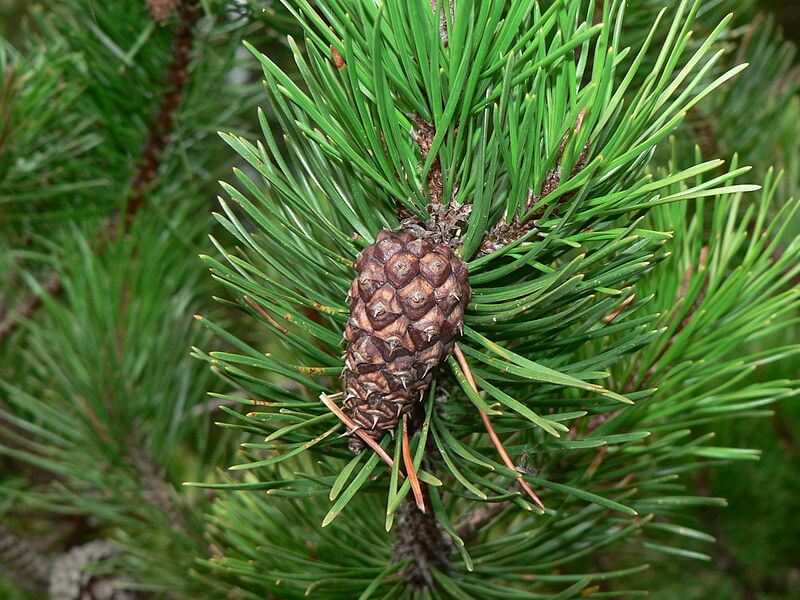
Lodegpole pine, photo by Walter Siegmund (CC 3.0).
I moved from my Douglas-fir hideout to a lodgepole pine. I chewed on some needles. A strong taste of lemon was initially apparent. This mellowed to a Kentucky bluegrass flavor. Later, having given up on deer, I found an Engleman spruce down in the drainage. The flavor was much more intense than the other two and bitter, with hints of perfume and turpentine. Several weeks later I sampled a subalpine fir. The acrid, tarry taste was powerful and unpalatable.
Chemical compounds such as phenols and terpenes create these flavor profiles. Conifers, with their distinctive scent (and taste), contain the compounds in their needles, bark, and resin. Terpenes have a variety of uses beyond a pleasing pine scent (thanks to pinene, a monoterpene) and turpentine (derived from resin). They prevent damage from fungi and bacteria, can attract certain invertebrates when in need of defense, provide intra-tree communication, and deter animals from munching on the plant by toxifying and/or reducing the digestibility of the needles.
Though largely successful in repelling most animal browsing, the defense compounds and high fiber concentrations of conifer needles do not impede the Spruce Grouse. Subsisting almost entirely on conifer needles during the winter, Spruce Grouse eat a great quantity of the needles to compensate for their low digestibility. The mass of their gastrointestinal tract, specifically the large intestine and caecum, also increases during the winter, providing more surface area for absorption and a greater capacity for bacterial flora in the caeca. Spruce Grouse, therefore, have access to an almost unlimited winter food source.
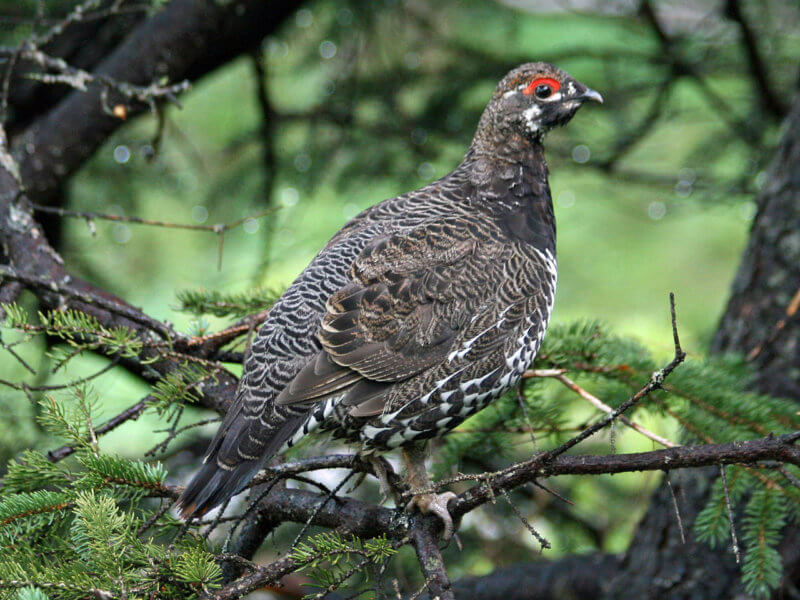
Photo by Dick Daniels (CC 3.0).
Humans do not have the gastrointestinal ability to consume conifer needles in quantity. However, humans do have the ability to pair wine with food. What wine might match pine needles, for example? This was a perfect question for my friend and wine appreciator Gary Fee.
Gary told me that the lemon and grassy notes of the lodgepole pine are also typical descriptors for a white wine grape called Semillon. He also recommended a Sauvignon Blanc for the lodgepole flavor. For those who like sparkling wine, he suggested that a French Cremant, Spanish Cava, or Italian Prosecco would pair well.
I can relish the terpenes in wine as well as in lodgepole pine needles.
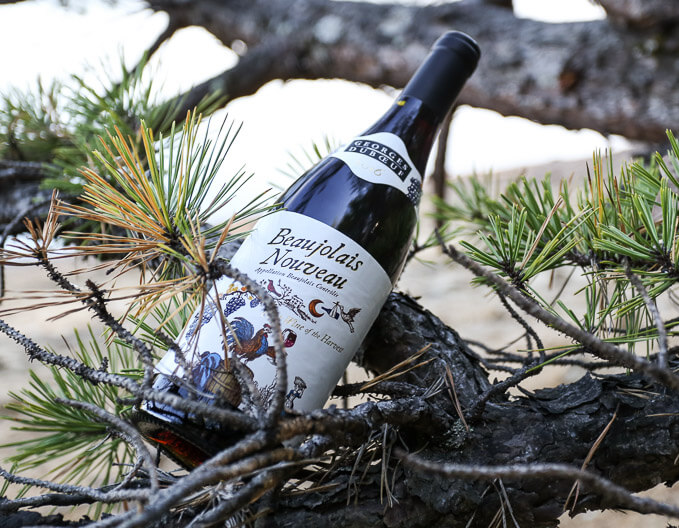
~~~
If you would like to sample the flavors of conifer needles beyond the tree try the following:
- The Rocky Mountain Flip cocktail at the Montgomery Distillery in Missoula
- Pinedrops IPA from Deschutes Brewery
- Spruce-tip home brews and IPAs from various breweries
- Pine needle tea
The taste of conifer needles adds another layer of interest to my investigation and appreciation of trees. It also helps me tap into what researchers at the Netherlands Institute of Ecology say is “the most popular chemical medium on our planet to communicate through”—terpenes.
For further reading:
- “The function of terpenes in plant defense.”
- Life in the Cold by Peter J. Marchand
- “Nutritional aspects of the diet of spruce grouse in central Alberta.” B. A. Pendergast and D. A. Boag
- “Plant communication: Mediated by individual or blended VOCs?” Hirokazu Ueda, Yukio Kikuta, and Kazuhiko Matsuda. Plant Signal Behav. 2012 Feb 1; 7(2): 222–226.
- Pocket Full of Rye by Agatha Christie (a murder mystery featuring taxine)
- “Seasonal changes in the internal anatomy of spruce grouse in Alberta.” B. A. Pendergast and D. A. Boag
- “Toxicity of Pine Monoterpenes to Mountain Pine Beetle,” Christine C. Chiu, Christopher I. Keeling & Joerg Bohlmann, Scientific Reports 7, Article: 8858(2017).
- “World’s most spoken language is ‘Terpene.'” ScienceDaily, 13 April 2017.




